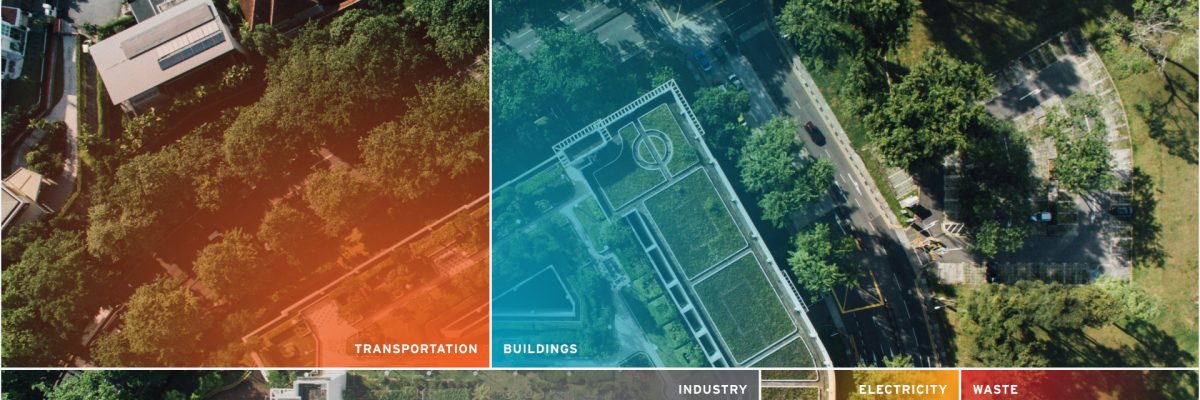Toronto, ON — Carbon emissions in the Greater Toronto and Hamilton Area (GTHA) rose slightly in 2024, increasing by 1% from 54.1 to 54.7 million tonnes, according to new data released by The Atmospheric Fund (TAF). This leaves the region well behind the 11% annual reduction needed to reach 2030 targets. In contrast, per capita emissions declined by 3% despite the region’s population growth of 300,000, evidence that some climate actions are delivering results.
TAF’s latest GTHA carbon emissions inventory reflects 2024 data, unpacks the sources of emissions by sector, region, and municipality, and analyzes emission trends and progress against climate targets and plans. The analysis also highlights current, practical, scalable solutions that deliver measurable benefits to the climate and make life more affordable.
Buildings and transportation remain the region’s largest sources of emissions, driven by continued reliance on natural gas for heating and increased car travel. Emissions from the electricity grid also rose sharply—up 28%—due to greater use of gas-fired generation. Ontario is losing its “clean grid advantage,” once touted to attract global investment. Meanwhile, industrial emissions saw a slight decline.
“Climate action is economic action,” says Julia Langer, CEO of TAF. “Every retrofit, every electric vehicle, every clean energy investment creates jobs, drives innovation, lowers energy bills, and builds resilience. Recent climate policy and funding rollbacks are concerning, revealing that our leaders aren’t getting the message—smart policies and investments deliver returns across affordability, housing, and mobility—and reduce carbon.”
The message is clear: climate solutions are delivering results and need leadership to accelerate the pace and scale of implementation. TAF’s report includes policy recommendations and a regional climate policy tracker, showcasing successful programs already underway across the GTHA. These include building retrofits that improve energy efficiency and the transition from gas heating to electric heat pumps—initiatives that reduce emissions while boosting local economies and improving quality of life.
Read the full report: http://carbon.taf.ca/
Highlights
- This one-of-a-kind inventory uses consistent methodology, data sources, and time frames across all six GTHA regions and cities from 2015-2024 to create a comprehensive picture of the sources and amounts of greenhouse gas emissions.
- Emissions (2024) come from: buildings (45%), transportation (37%), industry (13%), waste (3.5%), and agriculture (1%).
- Electricity emissions rose by 28% in 2024 due to a small increase in demand and the much larger increased use of natural gas-powered generating plants.
- Building emissions increased by 1.7% in 2024 due to industrial buildings using more natural gas and the increasing grid emissions intensity. Commercial and residential emissions decreased, partly due to a warmer winter, and partly a result of improved efficiency.
- Transportation emissions increased 1% as many sectors issue return to the office mandates.
- The report features local data for each of the six GTHA regions and cities and recommendations for policymakers at all levels of government.
Notes to editors
Carbon Emissions Inventory for the Greater Toronto and Hamilton Area 2024 reports on the major sources of emissions across the region starting in 2015: buildings, transportation, industry, waste, and agriculture. The inventory generally follows the guidelines established in the Global Protocol for Community-Scale Greenhouse Gas Emissions, covering Scope 1 and Scope 2 emissions. Inventory data is provided on an annual basis and covers the previous years.
For more information
Julie Leach
Senior Manager, Communications
The Atmospheric Fund
jleach@taf.ca, 416 393 6382


Hello Julie, This report is so impressive. Content is important and it is presented so well. The by sector and by region inventory is fantastic; great that data goes back to 2015.
I have read through the report and watched the webinar. I have some questions; what is best way to send them in?
Hi Debbie, thank you for reading through the materials and for your positive feedback. Feel free to email me your questions and I’ll connect you with the relevant department — jleach@taf.ca